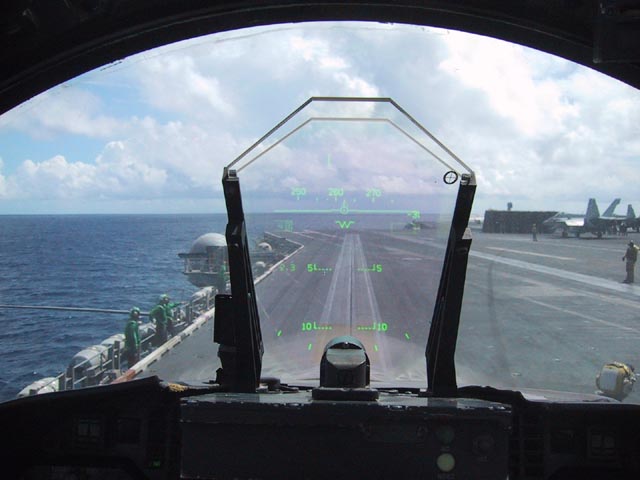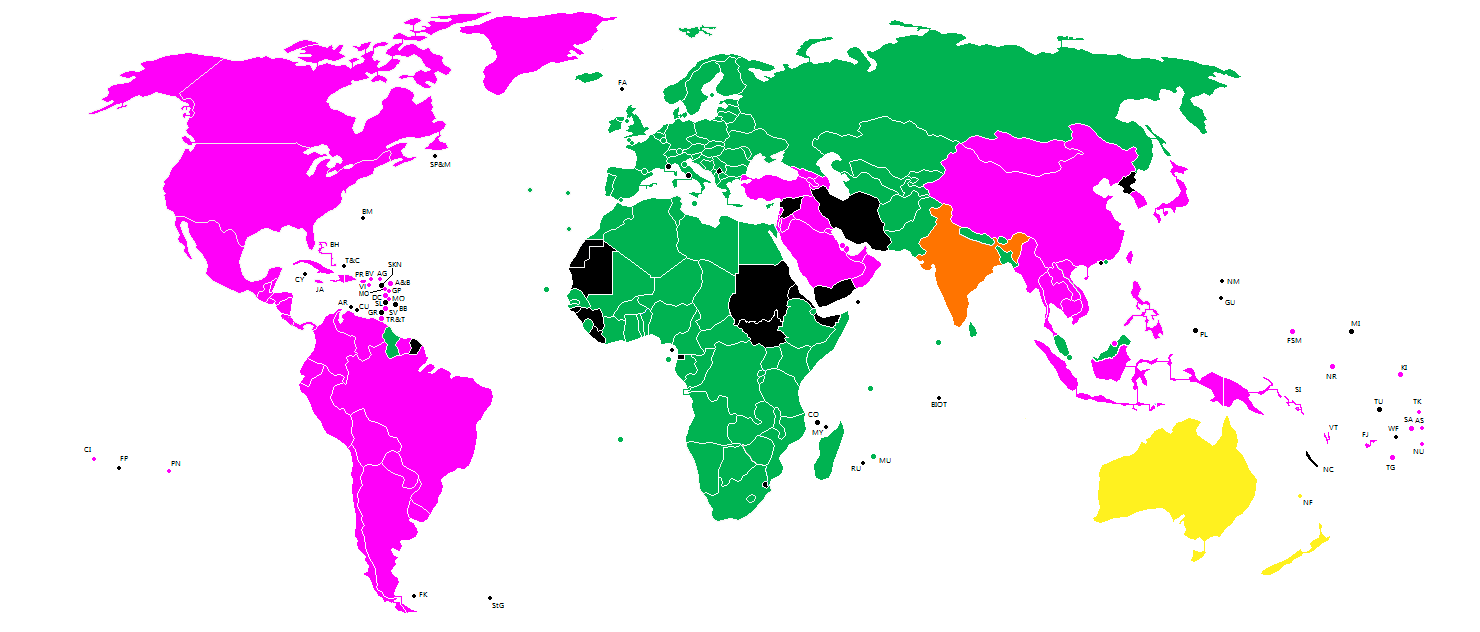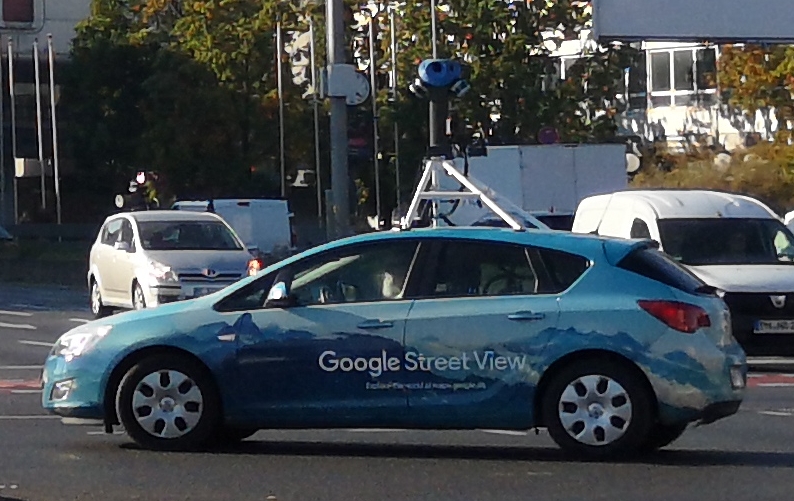|
See-through Display
A see-through display or ''transparent display'' is an electronic display that allows the user to see what is shown on the screen while still being able to see through it. The main applications of this type of display are in head-up displays, augmented reality systems, digital signage, and general large-scale spatial light modulation. They should be distinguished from image-combination systems which achieve visually similar effects by optically combining multiple images in the field of view. Transparent displays embed the active matrix of the display in the field of view, which generally allows them to be more compact than combination-based systems. Broadly, there are two types of underlying transparent display technology, absorptive (chiefly LCDs) and emissive (chiefly electroluminescent, including LEDs and "high-field" emitters). Absorptive devices work by selectively reducing the intensity of the light passing through the display, while emissive devices selectively add to the ... [...More Info...] [...Related Items...] OR: [Wikipedia] [Google] [Baidu] |
Head-up Display
A head-up display, or heads-up display, also known as a HUD (), is any transparent display that presents data without requiring users to look away from their usual viewpoints. The origin of the name stems from a pilot being able to view information with the head positioned "up" and looking forward, instead of angled down looking at lower instruments. A HUD also has the advantage that the pilot's eyes do not need to refocus to view the outside after looking at the optically nearer instruments. Although they were initially developed for military aviation, HUDs are now used in commercial aircraft, automobiles, and other (mostly professional) applications. Head-up displays were a precursor technology to augmented reality (AR), incorporating a subset of the features needed for the full AR experience, but lacking the necessary registration and tracking between the virtual content and the user's real-world environment. Overview A typical HUD contains three primary components: a ' ... [...More Info...] [...Related Items...] OR: [Wikipedia] [Google] [Baidu] |
Pepper's Ghost
Pepper's ghost is an illusion technique used in the theatre, cinema, amusement parks, museums, television, and concerts. It is named after the English scientist John Henry Pepper (1821–1900) who began popularising the effect with a theatre demonstration in 1862. This launched an international vogue for ghost-themed plays, which used this novel stage effect, during the 1860s and subsequent decades. The illusion is widely used for entertainment and publicity purposes. These include the Girl-to-Gorilla trick found in old carnival sideshows and the appearance of "ghosts" at the Haunted Mansion and the "Blue Fairy" in Pinocchio's Daring Journey, both at Disneyland in California. Teleprompters are a modern implementation of Pepper's ghost. The technique was used to display a life-size Illusion of Kate Moss at the 2006 runway show for the Alexander McQueen collection ''The Widows of Culloden.'' In the 2010s the technique has been used to make virtual artists appear onstage in a ... [...More Info...] [...Related Items...] OR: [Wikipedia] [Google] [Baidu] |
Head-up Display
A head-up display, or heads-up display, also known as a HUD (), is any transparent display that presents data without requiring users to look away from their usual viewpoints. The origin of the name stems from a pilot being able to view information with the head positioned "up" and looking forward, instead of angled down looking at lower instruments. A HUD also has the advantage that the pilot's eyes do not need to refocus to view the outside after looking at the optically nearer instruments. Although they were initially developed for military aviation, HUDs are now used in commercial aircraft, automobiles, and other (mostly professional) applications. Head-up displays were a precursor technology to augmented reality (AR), incorporating a subset of the features needed for the full AR experience, but lacking the necessary registration and tracking between the virtual content and the user's real-world environment. Overview A typical HUD contains three primary components: a ' ... [...More Info...] [...Related Items...] OR: [Wikipedia] [Google] [Baidu] |
Microsoft HoloLens
Microsoft HoloLens is an augmented reality (AR)/ mixed reality (MR) headset developed and manufactured by Microsoft. HoloLens runs the Windows Mixed Reality platform under the Windows 10 operating system. Some of the positional tracking technology used in HoloLens can trace its lineage to the Microsoft Kinect, an accessory for Microsoft's Xbox game console that was introduced in 2010. The pre-production version of HoloLens, the Development Edition, shipped on March 30, 2016, and is targeted to developers in the United States and Canada for a list price of $3000 which allowed hobbyist, professionals, and corporations to participate in the pre-production version of HoloLens. Samsung and Asus have extended an offer to Microsoft to help produce their own mixed-reality products, in collaboration with Microsoft, based around the concept and hardware on HoloLens. On October 12, 2016, Microsoft announced global expansion of HoloLens and publicized that HoloLens would be available f ... [...More Info...] [...Related Items...] OR: [Wikipedia] [Google] [Baidu] |
Google Translate
Google Translate is a multilingual neural machine translation service developed by Google to translate text, documents and websites from one language into another. It offers a website interface, a mobile app for Android and iOS, and an API that helps developers build browser extensions and software applications. As of , Google Translate supports languages at various levels, and , claimed over 500 million total users, with more than 100 billion words translated daily, after the company stated in May 2013 that it served over 200 million people daily. Launched in April 2006 as a statistical machine translation service, it used United Nations and European Parliament documents and transcripts to gather linguistic data. Rather than translating languages directly, it first translates text to English and then pivots to the target language in most of the language combinations it posits in its grid, with a few exceptions including Catalan-Spanish. During a translation, it looks fo ... [...More Info...] [...Related Items...] OR: [Wikipedia] [Google] [Baidu] |
Google Street View
Google Street View is a technology featured in Google Maps and Google Earth that provides interactive panoramas from positions along many streets in the world. It was launched in 2007 in several cities in the United States, and has since expanded to include cities and rural areas worldwide. Streets with Street View imagery available are shown as blue lines on Google Maps. Google Street View displays interactively panoramas of stitched VR photographs. Most photography is done by car, but some is done by tricycle, camel, boat, snowmobile, underwater apparatus, and on foot. History and features Street View had its inception in 2001 with the Stanford CityBlock Project, a Google-sponsored Stanford University research project. The project ended in June 2006, and its technology was folded into StreetView. * 2007: Launched on May 25 in the United States using Immersive Media Company technology. * 2008: In May Google announces that it was testing face-blurring technology on its p ... [...More Info...] [...Related Items...] OR: [Wikipedia] [Google] [Baidu] |
Tablet Computer
A tablet computer, commonly shortened to tablet, is a mobile device, typically with a mobile operating system and touchscreen display processing circuitry, and a rechargeable battery in a single, thin and flat package. Tablets, being computers, do what other personal computers do, but lack some input/output (I/O) abilities that others have. Modern tablets largely resemble modern smartphones, the only differences being that tablets are relatively larger than smartphones, with screens or larger, measured diagonally, and may not support access to a cellular network. Unlike laptops which have traditionally run off operating systems usually designed for desktops, tablets usually run mobile operating systems, alongside smartphones. The touchscreen display is operated by gestures executed by finger or digital pen (stylus), instead of the mouse, touchpad, and keyboard of larger computers. Portable computers can be classified according to the presence and appearance of physica ... [...More Info...] [...Related Items...] OR: [Wikipedia] [Google] [Baidu] |
AIII In 1000ft
''Adventure Island II'' is a side-scrolling platform game developed by Now Production and published by Hudson Soft that was released for the Nintendo Entertainment System in 1991. It is the sequel to ''Adventure Island (video game), Adventure Island'' and the second game in the series for the NES. While the first game was an adaptation of Sega's ''Wonder Boy'' arcade game, ''Adventure Island II'' is an original work, as were most of the subsequent ''Adventure Island'' games. A portable version was also released for the Game Boy in 1992 in video gaming, 1992 titled ''Takahashi Meijin no Bouken Jima II'' or ''Adventure Island'' outside of Japan. Plot Master Higgins' girlfriend Tina, has just been kidnapped by the Evil Witch Doctor's persistent followers. Eight perilous islands are in control of the various monster minions, although four friendly dinosaurs will gladly ally themselves with those willing to brave the islands' dangers and defeat their common oppressors. Thinking of how ... [...More Info...] [...Related Items...] OR: [Wikipedia] [Google] [Baidu] |



.jpg)

